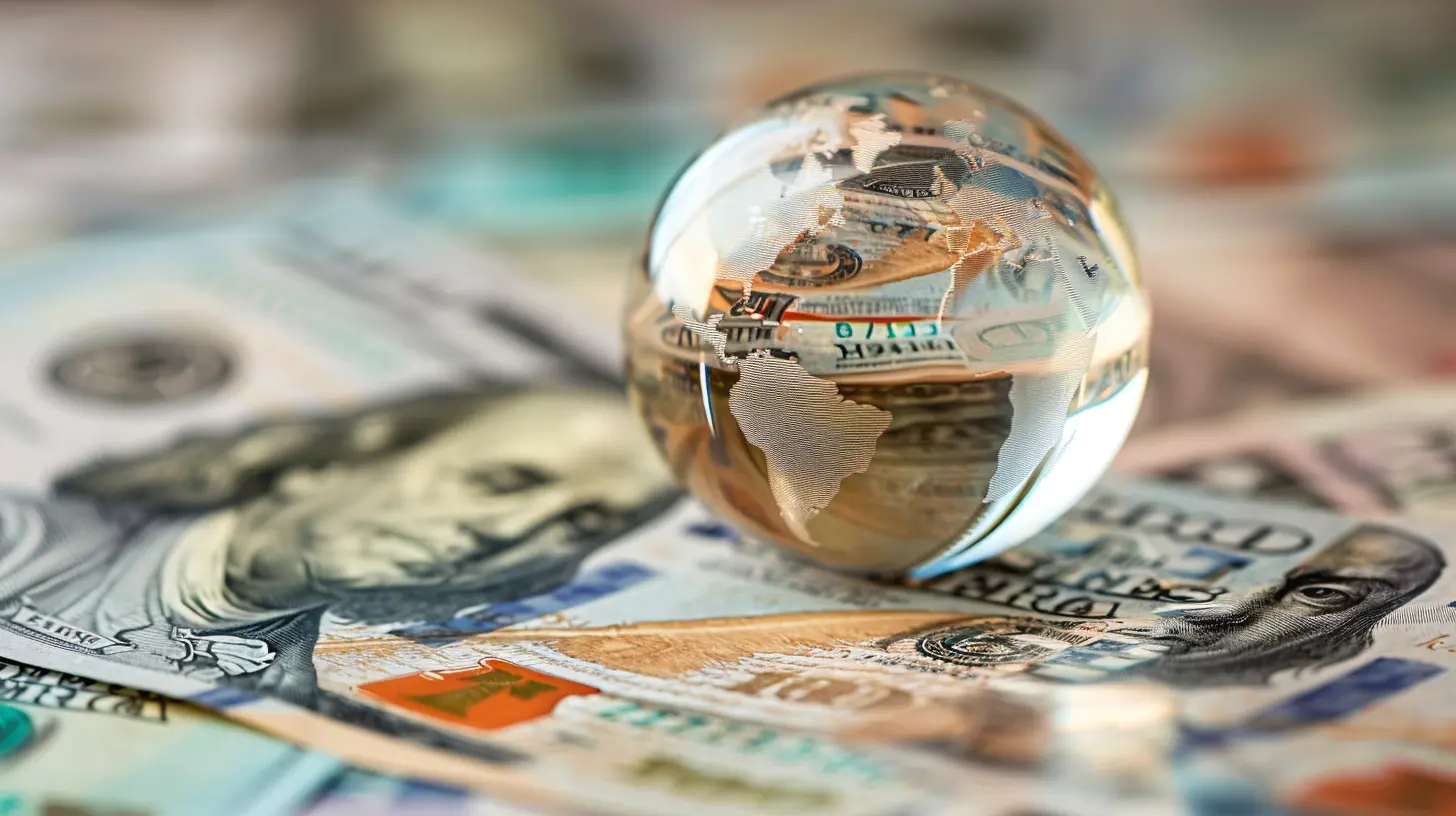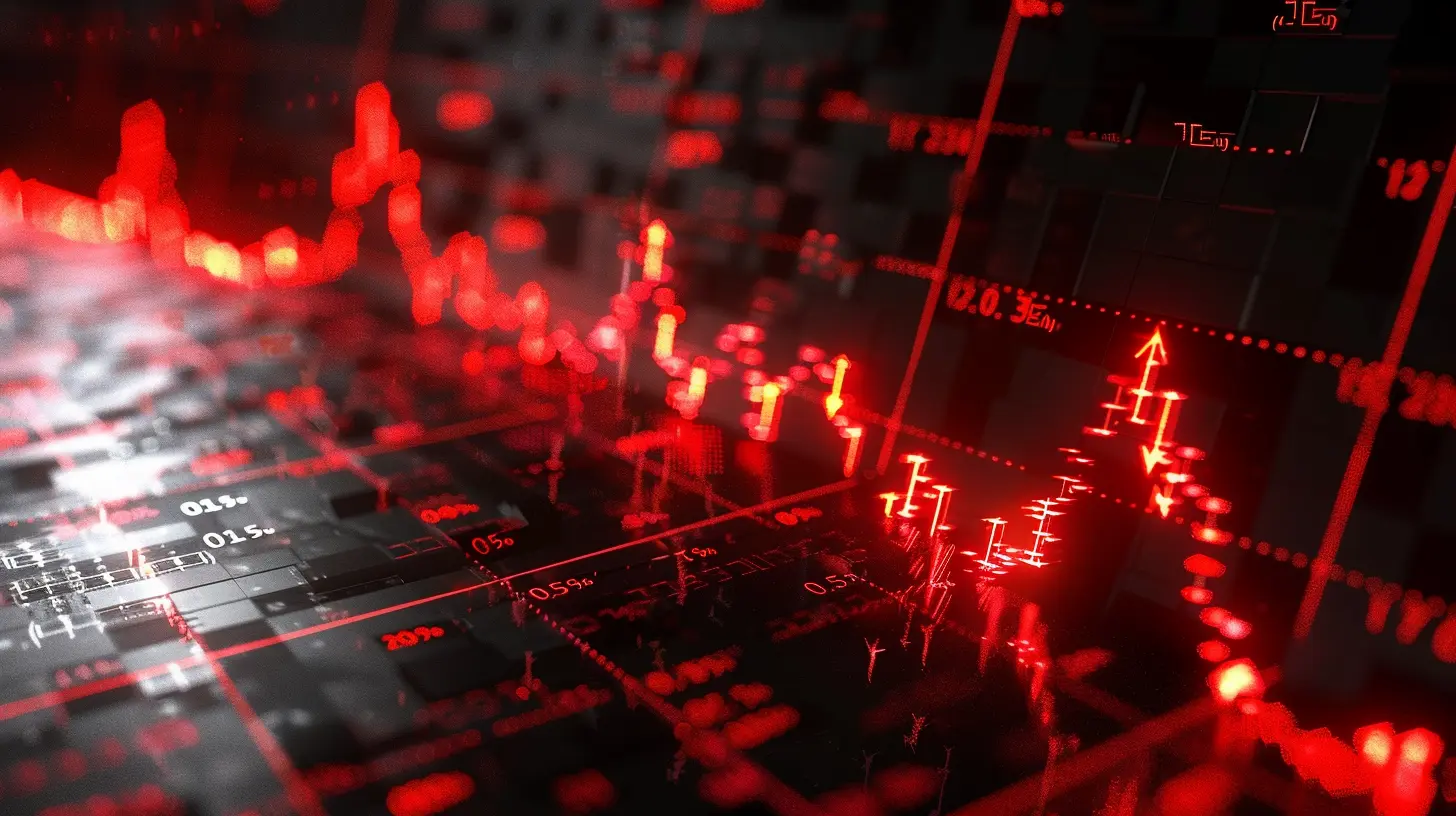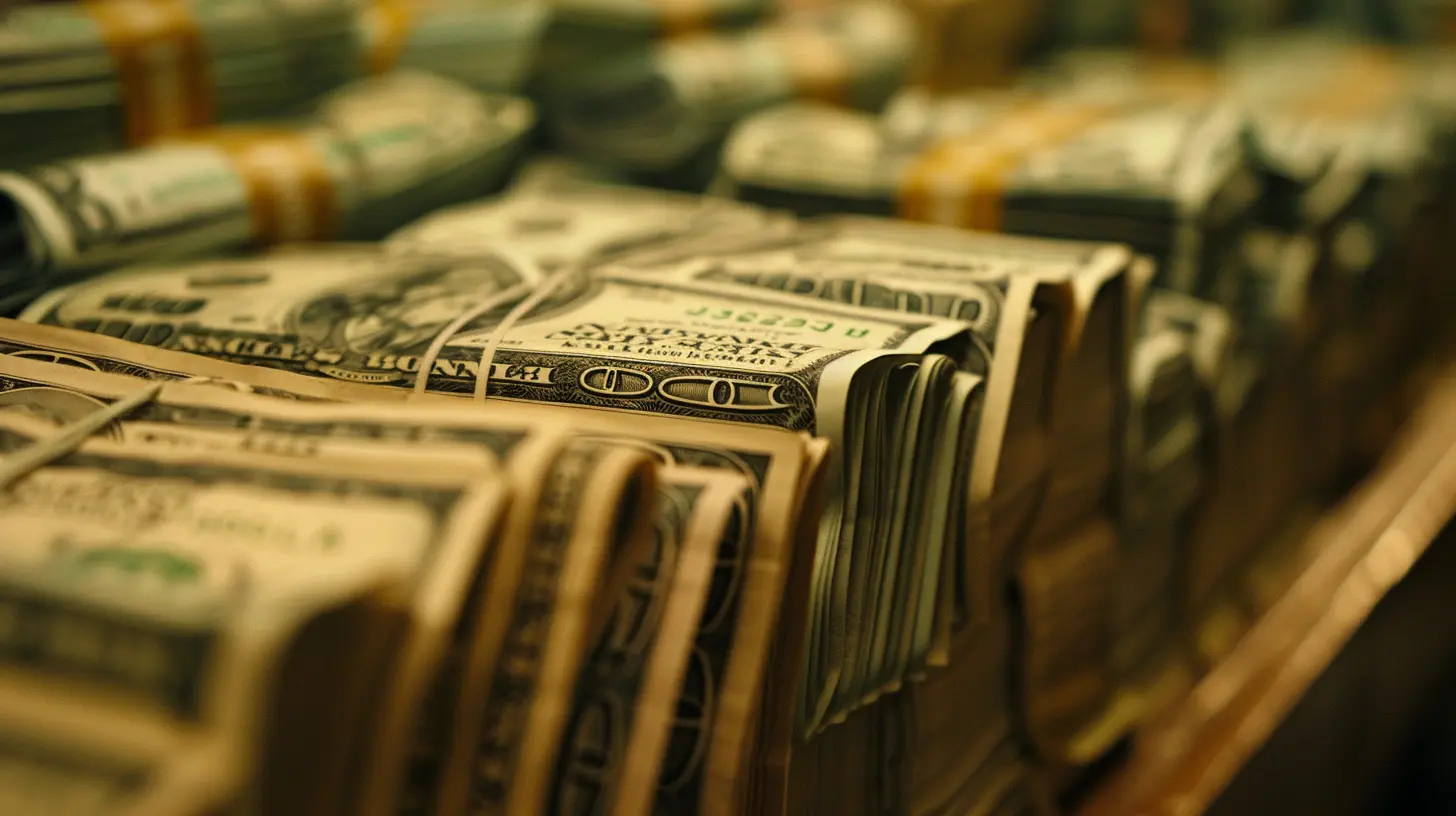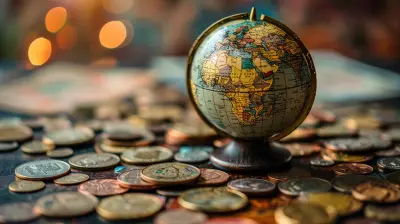The Economic Implications of Consumer Debt Levels
6 January 2025
Debt. It’s not a four-letter word we like to talk about, but let’s face it—it affects almost everyone. From students grappling with loans to families swiping their credit cards just to make ends meet, consumer debt is an ever-present part of modern financial life. But have you ever stopped to consider how this collective debt we carry impacts the economy at large? It’s not just a personal issue; it’s a major player in the national and even global economies.
In this article, we’re diving into the nitty-gritty of consumer debt levels and their ripple effects. How does it shape economic growth? What challenges does it bring? And most importantly, why should you care? Grab your coffee, and let’s break it down.
What Exactly Is Consumer Debt, and Why Does It Matter?
Before we dive deep, let’s start with the basics. Consumer debt refers to the money people owe for goods and services purchased on credit. Think credit cards, car loans, student loans, mortgages—you get the idea. It’s the stuff we borrow to live the lives we want (or need).So, why does this even matter? Well, consumer spending makes up a significant chunk of economic activity. In fact, in the U.S., consumer spending drives nearly 70% of the economy! When people borrow money, they're spending money they don’t have yet. This fuels industries, creates jobs, and supports businesses. But it’s a double-edged sword. If debt levels spiral out of control, the consequences can ripple through the entire economy like a row of toppling dominoes.
The Good: How Consumer Debt Can Boost the Economy
Debt, when used responsibly, isn’t all bad. It’s kind of like fire—use it wisely, and it can warm your home or cook your food. Use it recklessly, and, well, you get burned. Here’s how consumer debt can actually have some positive effects on the economy:1. Fueling Economic Growth
When consumers borrow, they spend. That spending keeps businesses running, creates jobs, and generates income for others. For example, imagine someone taking out a loan for a new car. The money doesn’t just benefit the car dealership—it trickles down to the manufacturer, suppliers, and even local gas stations. In this way, borrowing can act as a catalyst for economic growth.2. Increased Access to Opportunities
Debt can enable people to invest in themselves through education, starting a business, or buying a home. These investments often lead to better earning potential and, in theory, a stronger overall economy. Think of it as planting seeds today for a bigger harvest tomorrow.3. Consumer Confidence
When people feel confident about their financial situation, they're more likely to borrow and spend. This confidence reflects optimism about the economy, which itself can spur further economic growth. Picture it as a positive feedback loop—the better people feel, the more they spend, and the more the economy thrives.
The Bad: When Consumer Debt Becomes a Problem
Of course, there’s a flip side. When debt isn’t managed responsibly—or when external factors like job loss or inflation come into play—it can wreak havoc on both personal finances and the broader economy.1. Debt Overload and Reduced Spending
When debt levels get too high, consumers often tighten their belts. Instead of spending on new gadgets or dining out, they focus on paying off their balances. This shift in behavior can slow down economic activity, as businesses start seeing lower revenue. It's the economic equivalent of hitting the brakes when you're driving at full speed.2. Higher Default Rates
Let’s call a spade a spade: not everyone can pay back what they owe. When people default on their loans, financial institutions face losses. During the 2008 financial crisis, high levels of consumer debt—especially in the housing market—triggered massive defaults that nearly brought the entire global economy to its knees.3. Drag on Future Growth
High consumer debt means more income is directed toward repaying loans rather than being spent or invested. It's like carrying a heavy backpack up a hill—it slows everything down. Over time, this can stifle economic growth, as less money circulates in the economy.
The Ugly: Long-Term Economic Impacts of High Consumer Debt
While the short-term effects of consumer debt can be uncomfortable, the long-term impacts are where things get really dicey. Let’s take a closer look at the far-reaching consequences:1. Wealth Inequality
Ever notice how the richest folks seem to have the least debt? That’s no coincidence. Middle- and lower-income households often rely on debt to keep up with expenses, while the wealthy tend to have reserves of cash or assets. Over time, the gap between those who "have" and those who “borrow to have” widens, creating a cascade of social and economic challenges.2. Economic Vulnerability
When a population carries high levels of debt, it becomes more vulnerable to economic shocks—like recessions or pandemics. Think of it as a house of cards. One unexpected event (a job loss, a health crisis) can cause a financial collapse, not just for individuals but for entire sectors of the economy.3. Government Bailouts
When consumer debt spirals out of control, it often falls to governments to step in and clean up the mess. But this comes at a cost: taxpayer money. Whether it’s bailing out banks or creating stimulus packages, these interventions can lead to higher national debt levels, which in turn affect future budgets and economic stability.So, What’s the Solution?
Okay, we’ve covered the good, the bad, and the ugly of consumer debt. But what can be done to address this issue? There’s no one-size-fits-all answer, but here are a few strategies worth considering:1. Financial Education
Knowledge is power. If consumers better understand interest rates, budget management, and the true cost of borrowing, they’re more likely to make informed decisions. Schools, employers, and governments could play a bigger role in promoting financial literacy.2. Tightened Lending Regulations
Sometimes, lenders hand out credit like candy on Halloween—no questions asked. Stricter lending standards could help prevent consumers from taking on more debt than they can handle, reducing the risk of defaults.3. Accessible Debt Relief Programs
For those already drowning in debt, relief programs—such as loan forgiveness or restructuring—can provide a lifeline. These measures not only help individuals but also stabilize the broader economy by reducing default rates.4. Encouraging Savings
Imagine a rainy-day fund for every household. Encouraging savings through incentives like tax breaks or employer-matched programs can help people rely less on credit and more on their own reserves during tough times.Wrapping Up: Why It’s Everyone’s Problem
At the end of the day, consumer debt isn't just about numbers on a spreadsheet. It’s about people—about how we live, spend, and plan for the future. It's also about how our collective choices ripple through the economy, shaping everything from job markets to government policies.The key takeaway? Debt, when managed wisely, can be a tool for growth. But when it spirals out of control, it becomes a burden—not just for individuals but for society as a whole. So the next time you swipe that credit card, take a moment to think about the bigger picture. How we handle debt today shapes the economy we wake up to tomorrow.
all images in this post were generated using AI tools
Category:
Economic IndicatorsAuthor:

Audrey Bellamy
Discussion
rate this article
19 comments
Elora McAleer
Consumer debt levels are a double-edged sword. While they can fuel economic growth through spending, excessive debt poses risks, leading to financial instability and impacting overall economic health. Vigilance is essential.
February 17, 2025 at 1:37 PM

Audrey Bellamy
Thank you for your insightful comment! You're absolutely right—balancing consumer debt is crucial for sustainable economic growth while mitigating risks to financial stability.
Liora Patterson
Great insights! It's interesting how consumer debt shapes our economy. Understanding its implications can help us make smarter financial choices. Thanks for sharing!
February 7, 2025 at 12:05 PM

Audrey Bellamy
Thank you! I'm glad you found the insights valuable. Understanding consumer debt is indeed crucial for making informed financial decisions.
Zaren Adams
Empowered choices can turn debt into opportunity!
February 3, 2025 at 1:31 PM

Audrey Bellamy
Absolutely! Empowered choices can transform debt into a stepping stone for growth, allowing consumers to leverage it for investment and wealth-building opportunities.
Maddison Horne
Increasing consumer debt can strain the economy, affecting spending, credit access, and financial stability.
February 2, 2025 at 5:38 AM

Audrey Bellamy
Absolutely, rising consumer debt can lead to reduced spending power and tighter credit, ultimately threatening overall economic stability.
Anabella Garcia
Empower your future: Manage debt, embrace opportunities!
January 29, 2025 at 7:51 PM

Audrey Bellamy
Thank you for your insightful comment! Managing debt while seizing opportunities is crucial for fostering economic stability and personal growth.
Azurael Wallace
Thank you for this insightful article on consumer debt levels! It’s crucial to understand how our financial choices impact the economy. Your clear analysis provides valuable perspective, helping us navigate these challenging times. Looking forward to more of your thoughtful discussions on personal finance.
January 25, 2025 at 12:04 PM

Audrey Bellamy
Thank you for your kind words! I'm glad you found the article insightful, and I appreciate your engagement. Stay tuned for more discussions on personal finance!
Isabelle Carr
This article offers valuable insights into the impact of consumer debt on the economy. Understanding these implications is crucial for informed financial decision-making. Thank you for sharing!
January 22, 2025 at 8:03 PM

Audrey Bellamy
Thank you for your kind words! I'm glad you found the insights valuable for financial decision-making.
Nyxaris McAuley
High consumer debt impacts spending and economic stability long-term.
January 20, 2025 at 1:58 PM

Audrey Bellamy
Absolutely, high consumer debt can restrict disposable income and reduce overall spending, ultimately hindering economic growth and stability over time.
Elwynn McGrath
Consumer debt levels are like that last slice of pizza at a party—everyone wants it, but no one wants to pay the price! Let’s just hope our economy doesn’t end up with indigestion. Remember, folks: debts are meant to be paid, not just enjoyed!" 🍕💸
January 13, 2025 at 9:37 PM

Audrey Bellamy
Great analogy! It's crucial to balance enjoyment and responsibility with debt to ensure a healthy economy.
Kestrel Butler
Consumer debt levels are a double-edged sword. While they can drive short-term economic growth, excessive debt poses significant risks, potentially leading to financial instability and reduced consumer spending in the long run.
January 11, 2025 at 8:30 PM

Audrey Bellamy
Thank you for your insightful comment! You’ve highlighted a crucial balance between the benefits of consumer debt in stimulating growth and the risks of over-leverage that can jeopardize long-term stability.
Calyx Lewis
This article effectively highlights the dual nature of consumer debt, underscoring both its potential to stimulate economic growth and the risks of over-leverage. A nuanced understanding of these dynamics is crucial for policymakers and consumers alike.
January 11, 2025 at 4:10 AM

Audrey Bellamy
Thank you for your insightful comment! I agree that recognizing the dual nature of consumer debt is vital for informed decision-making among policymakers and consumers.
Grace Jimenez
Consumer debt levels might feel like a rollercoaster ride—full of ups and downs! While we hold on tight, it’s essential to keep our eyes on the prize: financial freedom! Let’s navigate these financial twists with some savvy planning and a smile!
January 10, 2025 at 9:57 PM

Audrey Bellamy
Absolutely! Staying focused on financial freedom is key. With smart planning, we can ride out the ups and downs of consumer debt effectively.
Nyx McCarron
Fascinating insights! How might trends evolve in 2024?
January 10, 2025 at 5:11 AM

Audrey Bellamy
Thank you! In 2024, we may see increased regulation on lending practices, shifts in consumer behavior towards savings, and potential impacts from interest rate changes affecting debt sustainability.
Marlowe McKay
Thank you for addressing such a crucial topic. Understanding consumer debt levels is essential for fostering financial literacy and stability. Your insights highlight the need for awareness and responsible management.
January 9, 2025 at 4:53 AM

Audrey Bellamy
Thank you for your thoughtful comment! I'm glad you found the insights valuable for promoting awareness and responsible financial management.
Adam Barlow
Consumer debt: the only thing rising faster than my hopes for a raise!
January 8, 2025 at 7:44 PM

Audrey Bellamy
Consumer debt trends can significantly impact economic growth, making it crucial to balance financial optimism with responsible spending.
Jolene Sullivan
This article effectively highlights the critical impact of rising consumer debt on the economy. Understanding these implications is essential for both consumers and policymakers to ensure sustainable financial health and growth.
January 8, 2025 at 1:59 PM

Audrey Bellamy
Thank you for your insightful comment! I'm glad you found the article's focus on the implications of consumer debt valuable for both consumers and policymakers.
Vance Jordan
Great insights! It's fascinating how consumer debt influences the economy. Balancing spending and saving is key for individuals and overall economic health. Thanks for sharing!
January 8, 2025 at 5:16 AM

Audrey Bellamy
Thank you for your thoughtful comment! I’m glad you found the insights valuable. Balancing spending and saving is indeed crucial for both individuals and the economy.
Mistral Fletcher
High consumer debt may hinder economic growth potential.
January 7, 2025 at 12:14 PM

Audrey Bellamy
While high consumer debt can restrict spending and reduce disposable income, it may also drive demand for credit and stimulate economic activity in the short term. Balancing these effects is crucial for sustainable growth.
Zinna Franco
This article presents a nuanced view of consumer debt, highlighting both its risks and potential benefits. Understanding its implications is crucial for informed financial decision-making and fostering economic resilience in uncertain times.
January 6, 2025 at 4:15 AM

Audrey Bellamy
Thank you for your insightful comment! I'm glad you found the article's exploration of consumer debt's complexities valuable. Understanding these dynamics is indeed vital for better financial choices.
MORE POSTS

How Inflation Affects Your Daily Expenses

How Food Prices Impact the Cost of Living

Managing Debt in Retirement to Maximize Your Income

The Impact of Inflation on Your Retirement Income

Cash Flow Resilience: How to Prepare for Economic Downturns

The Long-Term Benefits of Working with a Credit Counselor

Monthly Dividend Stocks: Are They Worth It?

Learning to Live Debt-Free After Credit Counseling

The Evolution of Offshore Banking Laws and Regulations

How to Maintain Compliance While Using Offshore Accounts

Exploring the Connection Between Financial Security and Life Satisfaction

The Role of Optimism in Achieving Financial Security